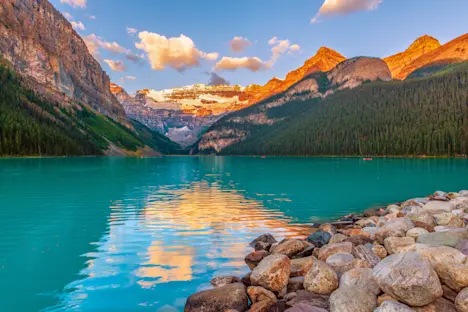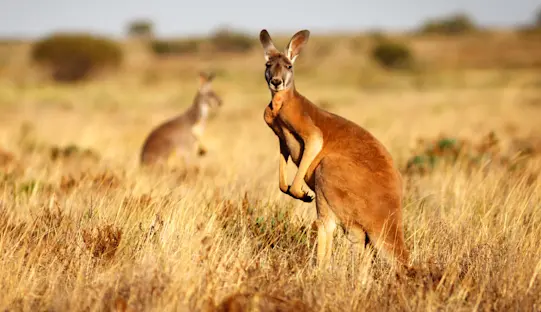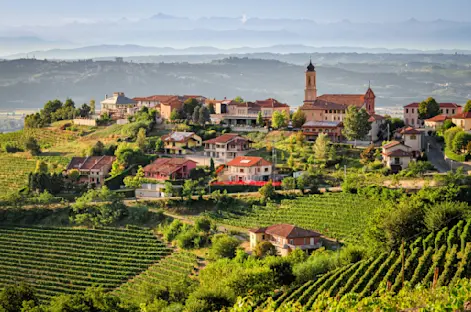
Around the world, glaciers are disappearing. Recently, scientists completed an inventory that quantifies how many glaciers and perennial snowfields remain.
Glaciers are tremendous accumulations of snow, compacted by weight and turned to ice. They move with gravity due to their own mass, often carrying rocks and sediment debris with them. The weight of the great continental glaciers not only carved physical features in passing but also depressed whole landscapes so severely that the terrains continue to rebound thousands of years after the melting of the ice.
Such massive fields of ice that have been with us for so long will undoubtedly continue to be with us far into the future, right? Wrong. Because of anthropogenic climate change, researchers say that some glaciers have now disappeared entirely, some no longer show movement, some are too small to meet the 0.0038-square-mile minimum and some have become rock glaciers—rocky debris with ice in the pore spaces.
Even if you think you don’t, you need to care about the melting of glaciers. The loss of them will have several different effects. For example, the melting of glaciers in the Himalayas will have an influence on the drinking supplies of the millions of people who rely on meltwater rivers. If the great Antarctica and Greenland ice sheets were to entirely melt, sea level would rise by more than 230 feet.

Nepal’s Ngozumpa Glacier is the longest glacier in the Himalayas. The Nepali Himalayas have been warming significantly over recent decades. The melting of Ngozumpa is a huge concern because it plays a crucial role in the local hydrological cycle and impacts the availability of water downstream.
So, to call attention to the current and alarmingly rapid loss of glaciers, Glacier Loss Day is being proposed.
In general, glaciers are disappearing
The United States is losing its glaciers. Using aerial and satellite imagery between 2013 and 2020, Portland State University researchers recently inventoried the glaciers and perennial snowfields in the western continental U.S. Their report, published in the journal Earth System Science Data in September 2023, identified 1,331 glaciers and 1,176 perennial snowfields. It updates a mid-20th century inventory that derived from U.S. Geological Survey topographic maps made over a 40-year span and provides a baseline for estimating future changes amid a warming climate.
The new inventory excludes 52 of the 612 officially named glaciers because they are no longer glaciers. The official names are those listed in the federal Geographic Names Information System, the nation’s repository for the names and locations of landscape features. Milk Lake Glacier in Washington’s Mt. Baker-Snoqualmie National Forest and Wyoming’s Hooker Glacier have disappeared altogether; 25 were instead classified as perennial snowfields, which unlike glaciers don’t move; 18 had areas smaller than the commonly used threshold of 0.0038 square miles, or roughly the size of two, side-by-side football fields; and seven were considered rock glaciers.

The western United States is losing its glaciers. Between 1966 and 2015 in Montana’s Glacier National Park, all 26 named glaciers got smaller. The average loss was 40%, but some glaciers lost as much as 80% of their area.
The loss of glaciers impacts more than aesthetics. Glaciers act as natural regulators of streamflow. They melt a lot during hot, dry periods and don’t melt much during cool, rainy periods. As glaciers shrink, they have less ability to buffer seasonal runoff variations, and watersheds become more susceptible to drought. Retreating glaciers also leave behind sharp, steep embankments on either side, which can collapse and result in catastrophic debris flows. Globally, the loss of glaciers is also a major contributor to sea-level rise.
In Antarctica, glaciers are retreating
The Cadman Glacier in Antarctica is 1.5 miles wide at its mouth and about seven miles long, flowing northwestward into the head of the southern arm of Beascochea Bay on the west side of the Antarctic Peninsula. The glacier was first roughly surveyed in 1909 by the French Antarctic Expedition under Jean-Baptiste-Etienne-Auguste Charcot. In 1935, it was surveyed again by the British Graham Land Expedition (BGLE), led by John Rymill, and later named for John Cadman, Lord Cadman of Silverdale, who contributed toward the cost of the BGLE.
It appears that this glacier is now retreating—rapidly. Using satellites to track the Cadman Glacier, a research team led by a glaciologist at England’s University of Leeds found that between November 2018 and May 2021, the glacier retreated almost five miles as the ice shelf at the end of the glacier—where the ice extends into the sea and is anchored onto the seafloor at what is known as the “grounding zone”—collapsed.

Scientists have known for some time that the ocean around Antarctica is rapidly heating up and that this poses a major threat to the continent’s glaciers and ice sheet, with consequences for global sea-level rise.
Normally, the ice shelf would have acted as a buttress, slowing the movement of the glacier towards the sea. But surrounded by warmer ocean waters, the scientists believe the ice shelf thinned and became ungrounded. It was then no longer able to hold back the glacier. As a result, the glacier’s movement rapidly accelerated—doubling its speed—increasing the amount of ice it discharged into the sea as icebergs.
Unusually high ocean water temperatures in early 2018 and 2019 around the west Antarctic Peninsula are believed to have triggered the rapid, dynamic change on the Cadman Glacier system. By analyzing historic satellite data, the scientists believe warmer ocean waters gradually thinned the glacier’s ice shelf from the early 2000s and possibly since the 1970s.
The warmer water was not carried on the surface of the ocean but deep in the water column. This warmer water may have reached the ice shelf where it is grounded on the seafloor. The result was that the ice shelf began to melt from the bottom up. In 2018 and 2019, the ice shelf was so thin that it broke free from the grounding zone and started to float, in effect slipping anchor and enabling the Cadman Glacier to drain more ice into the sea.

A new Antarctica study holds important lessons for better predicting how climate change will continue to affect this sensitive polar region.
According to the scientists, who published their analysis in the scientific journal Nature Communications in November 2023, the Cadman Glacier can be seen as an example of a “glaciological tipping point,” where a system in a steady state can switch paths based on a change in the environment. A tipping point was reached in 2018 caused by the arrival of the unusually warm ocean water, causing the ice shelf to unground. The Cadman Glacier then increased its ice discharge by 28% in 13 months. The ice on the glacier has continued to thin, with elevation being lost at a rate of around 65 feet a year, equivalent to a loss in height of a five-story building. And around 2.16 billion tons of ice are draining from the glacier into the ocean each year, making the Cadman Glacier now officially in a state of “substantial dynamic imbalance.”
The researchers say that they were surprised to see the speed at which the Cadman Glacier went from being an apparently stable glacier to one where such sudden deterioration and significant ice loss was observed. What was also curious was that the neighboring glaciers on this part of the west Antarctic Peninsula did not react in the same way, leaving a big question: why had the Cadman Glacier collapsed when the neighboring Funk Glacier and Lever Glacier remained relatively stable?
By analyzing oceanographic data, the scientists believe a series of subsea rock structures called “ridges” or “sills,” at a depth of 656 feet and 754 feet, are acting as a defensive barrier, deflecting channels of warmer water from reaching the Funk and Lever Glaciers. However, a further rise in ocean temperatures could compromise the ability of the ridges to protect some glaciers.

Last year, the Hintereisferner Glacier in Tyrol, Austria, reached its Glacier Loss Day (GLD) earlier than ever before. The GLD serves as an indicator of a glacier’s health throughout the year.
This study brought together data from three decades, nine different satellite missions, and in situ oceanographic measurements to understand the changes happening in Antarctica. It shows that apparently stable glaciers can become unstable almost without warning, and then thin and retreat very strongly. It also emphasizes the need for long-term monitoring of the Earth’s polar regions with a range of sensors, which all tell a different piece of the story, say the scientists. Other glaciers on the Antarctic Peninsula may be vulnerable to similar sudden changes because of subsea geology.
In real time, glaciers are losing
There’s a measure that’s become popular in recent years called Earth Overshoot Day. That’s the day when humanity’s demand for ecological resources and services in a given year exceeds what Earth can regenerate in that year. We maintain this deficit by liquidating stocks of ecological resources and accumulating waste, primarily carbon dioxide in the atmosphere. The date of Earth Overshoot Day is announced each year on June 5 (World Environment Day).
Now, a group of glacier experts from Austria’s University of Innsbruck proposes “Glacier Loss Day” or GLD as a way to measure the annual mass balance of glaciers. Mass balance is the difference between the amount of snow and ice that accumulates on a glacier and the amount that melts or sublimates. If the mass balance is positive, the glacier is growing. If the mass balance is negative, the glacier is shrinking. In other words, GLD is the day during the year when the glacier has lost all the mass it gained during the previous winter.

Since 2020, the enormous mass of blue-and-white, crystalline ice of Patagonia’s Perito Moreno Glacier has been retreating, consisting of a loss of 2,300 feet or approximately seven blocks.
The Hintereisferner, a glacier in the Tyrolean Alps, is a case in point. It has been continuously monitored for more than 100 years, and there are records of its mass balance since 1952. This makes it one of the best-studied glaciers in the Alps, and it has been key to climate and glacier research at the University of Innsbruck for decades. Since 2016, researchers have also been surveying the glacier with a unique system: the surface of the glacier is scanned daily with a terrestrial laser, providing measurements of elevation changes in real time.
When the GLD arrives, it means that the glacier is no longer in balance with the natural conditions for that year. The earlier the GLD happens, the more time is left in the remaining summer that the glacier will likely lose volume and, thus, mass. In 2022 the GLD was measured on June 23. In the two previous years, Glacier Loss Day was reached only in the middle of August. Even in years with large negative balances, such as 2003 and 2018, GLD did not occur until the end of July.
Even if not every summer in the future will necessarily be like the one in 2022, the trend is clear for the glaciologists: anthropogenic climate change is taking its toll on glaciers because the developments lie outside normal fluctuation ranges. The consequences of our greenhouse gas emissions are already being felt.

Glaciers tell stories of time; tales of what had happened many years ago and what is happening now. I sincerely hope we’ll always have glaciers as guides.
Future projections do not present an encouraging outlook, either. Only half of the Hintereisferner will be left in 10 to 20 years, states the research team in their study, which was published in the journal The Cryosphere in August 2023.
In memories, glaciers are looming
Author Annie Dillard wrote in her 1974 book Pilgrim at Tinker Creek: ”Instead of flying directly south, the monarchs crossing high over [Lake Superior] take an inexplicable turn towards the east. Then when they reach an invisible point, they all veer south again. Each successive swarm repeats this mysterious dogleg movement, year after year. Entomologists actually think that the butterflies might be ‘remembering’ the position of a long-gone, looming glacier.”
I sincerely hope that not all our glaciers will soon be “long-gone”; I hope we’ll always have vast, frozen expanses of fresh water—and some reminders of ancient ages past.
Here’s to finding your true places and natural habitats,
Candy






























